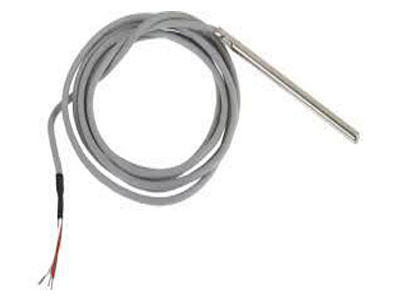What Is The Full Form Of PT100?
Key Takeaway
PT100 is a type of temperature sensor commonly used in industrial and scientific applications. The “PT” stands for platinum, which is the material used for the sensor element. The “100” indicates that the sensor has a nominal resistance of 100 ohms at 0 degrees Celsius.
PT100 sensors are valued for their accuracy and stability in measuring temperature. They are widely used in environments where precise temperature control is essential, such as in laboratories, manufacturing processes, and HVAC systems. Understanding the full form of PT100 helps in recognizing its importance in accurate temperature measurement.
Understanding PT100 Sensors
PT100 stands for “Platinum Resistance Thermometer,” where “PT” signifies platinum, and “100” indicates that the sensor has a resistance of 100 ohms at 0°C. These sensors are known for their accuracy, stability, and wide temperature range. PT100 sensors use the predictable change in electrical resistance of platinum with temperature to measure heat accurately.
Platinum is chosen for its stable resistance-temperature relationship, high melting point, and excellent corrosion resistance. These properties make PT100 sensors ideal for use in harsh environments and critical applications. The 100-ohm standard ensures consistency and compatibility across different systems and industries.

How PT100 Sensors Work
PT100 sensors operate based on the principle of resistance temperature detectors (RTDs). As temperature changes, the resistance of the platinum element within the sensor changes in a predictable manner. This change in resistance is measured and converted into a temperature reading.
The relationship between resistance and temperature for platinum is highly linear, which simplifies calibration and increases accuracy. A typical PT100 sensor consists of a thin platinum wire wound around a ceramic or glass core. This assembly is protected by a metal sheath to prevent mechanical damage and environmental contamination.
The sensor is connected to a measurement circuit, which applies a small constant current through the platinum element. The resulting voltage drop across the element is proportional to its resistance, which can be used to determine the temperature. PT100 sensors are often used in a 2-wire, 3-wire, or 4-wire configuration to compensate for lead wire resistance and ensure accurate measurements.
Applications of PT100 Sensors
PT100 sensors are used in a wide range of applications due to their accuracy and stability. In the industrial sector, they are commonly found in process control systems, where precise temperature measurements are crucial for maintaining product quality and efficiency. Industries such as chemical manufacturing, food processing, and pharmaceuticals rely on PT100 sensors to monitor and control critical processes.
In the HVAC industry, PT100 sensors are used to measure air and water temperatures, ensuring optimal performance of heating, ventilation, and air conditioning systems. They are also used in environmental monitoring, where accurate temperature data is essential for studying climate change and other ecological phenomena.
In scientific research, PT100 sensors are used in laboratories to measure temperatures in experiments that require high precision and stability. Their wide temperature range makes them suitable for applications from cryogenics to high-temperature furnaces. Additionally, PT100 sensors are used in the automotive and aerospace industries to monitor engine and component temperatures, ensuring safe and efficient operation.
Advantages and Limitations
PT100 sensors offer several advantages, including high accuracy, excellent stability, and a wide temperature range. Their linear resistance-temperature relationship simplifies calibration and enhances measurement precision. The use of platinum provides superior long-term stability and resistance to environmental factors, making PT100 sensors reliable for critical applications.
However, PT100 sensors also have some limitations. They are generally more expensive than other types of temperature sensors, such as thermistors and thermocouples. The higher cost is due to the use of platinum and the complexity of manufacturing. Additionally, PT100 sensors have a slower response time compared to thermocouples, which can be a disadvantage in applications requiring rapid temperature changes.
Another limitation is the potential for lead wire resistance to affect measurement accuracy, especially in 2-wire configurations. This issue can be mitigated by using 3-wire or 4-wire configurations, which compensate for lead wire resistance and improve accuracy. Despite these limitations, the benefits of PT100 sensors often outweigh their drawbacks, making them a preferred choice for many applications.
Comparison with Other Sensors
When comparing PT100 sensors with other temperature sensors, such as thermocouples and thermistors, several factors come into play. Thermocouples are known for their wide temperature range and fast response time, making them suitable for applications involving rapid temperature changes. However, they are less accurate and stable than PT100 sensors, especially at lower temperatures.
Thermistors, on the other hand, offer high sensitivity and are typically less expensive than PT100 sensors. They are suitable for applications requiring precise temperature control within a limited range. However, thermistors are less stable and have a non-linear resistance-temperature relationship, complicating calibration and reducing overall accuracy.
PT100 sensors stand out for their high accuracy, stability, and linear response. While they are more expensive and have a slower response time compared to thermocouples, their precision and reliability make them ideal for applications where accurate temperature measurement is critical. Choosing the right sensor depends on the specific requirements of the application, including temperature range, accuracy, response time, and budget.
Conclusion
PT100 sensors are essential tools for precise temperature measurement in various industries. Their high accuracy, stability, and wide temperature range make them ideal for critical applications in industrial processes, HVAC systems, scientific research, and environmental monitoring. While they have some limitations, such as higher cost and slower response time, the benefits of PT100 sensors often outweigh these drawbacks.
Understanding how PT100 sensors work, their applications, and how they compare with other temperature sensors is crucial for engineers. By choosing the right sensor for the specific requirements of their application, engineers can ensure accurate and reliable temperature measurements, contributing to the efficiency, safety, and quality of their processes. PT100 sensors, with their proven performance and reliability, continue to play a vital role in modern industry.
